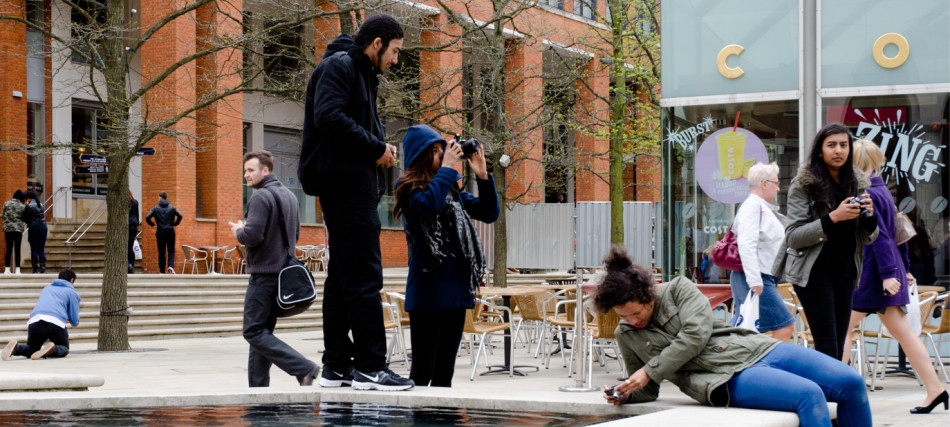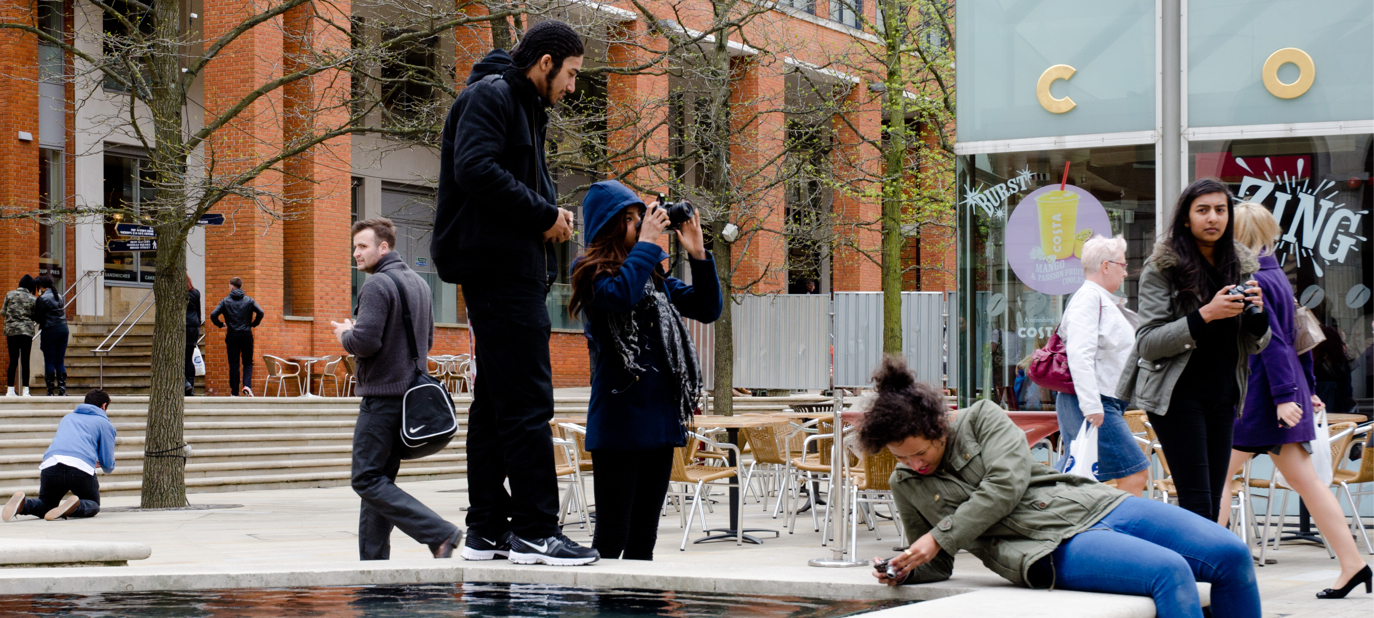
I’ve scheduled the four photo walks which form the culmination of this period of research into photography and walking and place. They take place over four days in November and tickets are on sale on this site.
What’s not on this site is any description of what the walks might be. That’s because I haven’t decided, not because I don’t know but because I have far too many ideas. I’ve been swimming in inspiration soup for four months, which has been great, but it’s time to, I dunno, strain out the bones and refine the stock, or something. To force me to do this I set the ultimate deadline.
In this blog post I’m going to make the first attempt at carving out four themes for the walks. Let’s see what happens.
First, some general principles.
- The walks must be accessible. My standard photo walks, run through Photo School, work because anyone who can carry a camera and walk around for 90 minutes can get something out of them. This is something I’ve worked hard to ensure. It is not a walk for “photographers” with fancy cameras who want to talk about esoteric things. It’s a walk for everyone. Similarly these walks can not be for “artists” to the exclusion of others.
- The theory is secondary. I’ve read and thought about a lot of things that will feed into these walks, but these things should inform the walks, not dominate them. The theory should be a means to an end and understanding its nuances should not be necessary.
- They must be different. I’ve been running photo walks for 18 months. There are loads of photography-related walking tours and workshops. These cannot be like those. They have to be different in some fundamental ways.
- They cannot be experiments. I’ve been in a period of experimentation and research but the walks are not part of that. While part of a long-term process these walks must be solid concepts, stand alone products, that can be experienced and appreciated as they are.
- They are artworks. This has been a tricky thing to get my head around and then articulate, but the walks themselves need to be works of art. That doesn’t make them better than my “normal” walks. It just brings in some new criteria.
- The walkers are participants. Following on from the above, the people who come on these walks are participating in the creation of an artwork. Again, a bit of a weird one and something that needs to be addressed but kept in perspective.
It also might be worth revisiting the four initial frameworks I came up with for the Arts Council application. Writing these was weird in a Catch-22 kinda way. I wanted funding to devise some frameworks but needed to say what the frameworks were in order to justify the funding to devise them, but I took it to be an indication of where my work might lead, not something written in stone. If I did none of them it wouldn’t matter. So, where was my mind at back in June?
- The Tour Guide As Filter. What does it mean to be a guide? How does a guide inform perception of the city through route and narration? How can this be distributed among participants? What can we learn from storytelling, collaborative and didactic? How can the tensions between the guide and the guided be explored?
- Expanding The Treasure Hunt. Can the hackneyed model of participants photographing a list of subjects be made fresh? How can exploration be narrated and guided through making connections, building new maps and creating new realities?
- Photo Manipulation Through Sense. Can photographs be “manipulated” by altering other senses? Using audio triggered in specific locations, participants experience different sounds to explore how this affects their visual perception.
- Storytelling. Participants are encouraged to build their own narrative of the area through ten photographs. Workshopped after the walk and exhibited online.
The first now feels too broad, and I’ve moved on from that. The second is still intriguing but I don’t think I’ve figured out a way to do it yet. The third I’m sticking with. The fourth was a total misfire. But at the very least I can see the threads that lead me to those and how I’ve gotten from then to now, so that’s good.
So, as of right now, what are my current frameworks for these walks?
Audio Walk
This either uses sounds and music to manipulate the participants’ moods when taking photographs, OR, using listening exercises to inform photographic subjects, inspired by the SOUNDkitchen walk during Still Walking and conversations at If Wet. The intersection of sound art and photography (the manipulation and recording of sound waves and light waves) has been at the forefront of my research so something involving that has to happen.
Rules Walk
This comes from the Practical Psychogeography workshop I ran with Cathy Wade and never got around to writing up because it contained multitudes and I didn’t know where to start, though I think I do now. The main thing here is constraining the walk through rules or instructions. They could be very specific or they could be very vague. They could also include a random element (roll a die at each junction). The purpose here is to subvert the idea of a “guide” and force the participants to go in directions they wouldn’t normally choose. I also like the idea of forcing people to revisit the same place a few times. How this works in a group will need some careful consideration.
Team Walk
This is the risky one as I have no idea how it might work. The inspiration comes, again, from thinking about how musicians control sound and how that might be applied to photographers. Musicians often work in groups which requires acute awareness of what the others in the group are doing. Photographers are solitary practitioners who very rarely work together to create an image, or series of images. But a decade of social activity based around photographs on Flickr and similar environments has certainly shown photographers can work together in some creative ways. The big idea here is the creation of Photographer Quartets where four people work together as equals, each with their own camera, to create something. Maybe it’s as simple as a capturing the same moment from four perspectives. Maybe it’s something more complex. But they have to be “in tune” with each other.
Framed Walk
This looks at the idea of framing, both visually and mentally. When we create a frame we decide what to include and what to exclude. When we’re given a frame we focus on what’s within it and discard what isn’t. I’m interested in how these decisions are made, consciously and subconsciously, and how we might adjust them to see things in new ways. This takes a lot of inspiration from the Still Walking programme and might involve people with local knowledge having a conversation with participants before the walk. This is probably the vaguest walk at the moment.
So, those are my walks as they currently stand. My goal is to have them completely nailed down by Monday and I would welcome any feedback anyone might have either in the comments below or by email. I’ll also be at If Wet this Sunday if you’re going to that.
